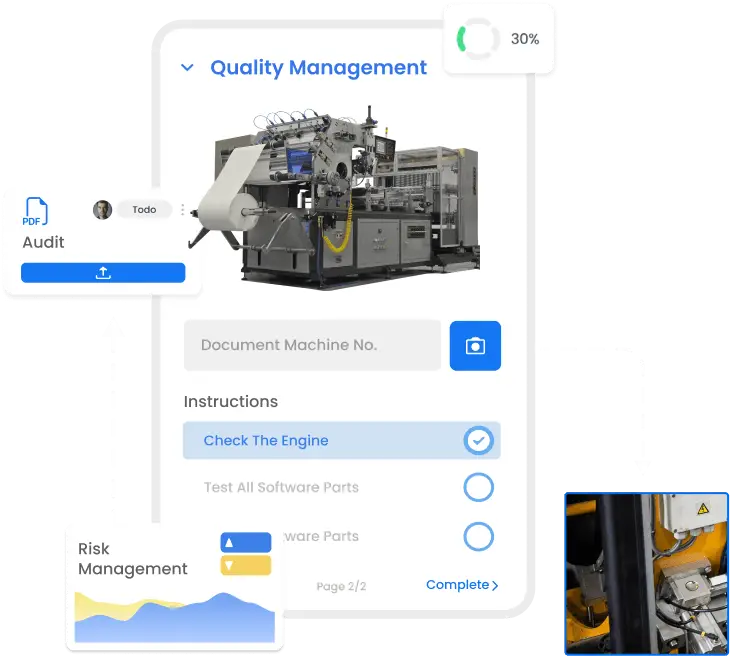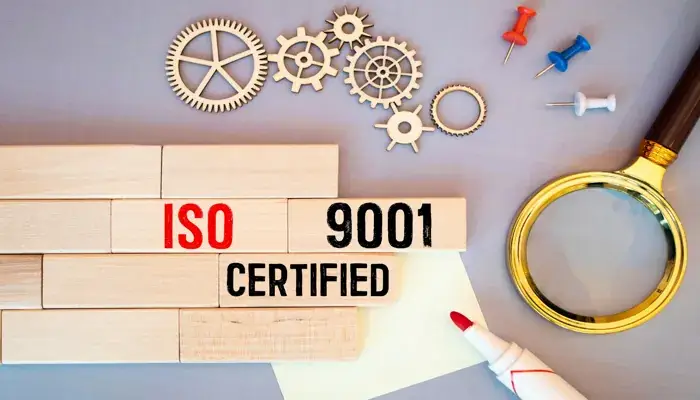Summary: ISO 9001, an internationally recognized standard for quality management systems, mandates stringent document control practices to ensure compliance and uphold quality standards. Effective change control, management of documents, and utilization of document management software are pivotal for achieving ISO 9001 certification and maintaining a robust Quality Management System (QMS).
Understanding ISO 9001 Document Control
To achieve international standard that specifies requirements for a quality management system compliance, organizations must implement a comprehensive document management system, preferably electronic, to facilitate document creation, review, approval, and distribution. This system should offer features such as document templates for consistency, version control systems, and access/change control procedures.
ISO 9001: The Cornerstone of Quality Management
ISO 9001 is a globally recognized standard developed by the International Organization for Standardization (ISO). It sets out the criteria for a Quality Management System (QMS) and provides a framework for organizations to enhance customer satisfaction, improve processes, and continually strive for excellence. Document control is an integral part of international standard that specifies requirements for a quality management system, ensuring that documented information is properly managed and controlled.
The Key to ISO 9001 Compliance Document Control
Document control encompasses the processes and procedures used to create, approve, distribute, and update documents within an organization. It involves managing various types of documents, including policies, procedures, work instructions, forms, and records. ISO 9001 requires organizations to establish and maintain a resilient document control system to ensure the availability, accuracy, and integrity of documented information.
The Purpose of Document Control
ISO 9001 requires documented procedures for document development, approval, and control. It extends control to cover the entire document lifecycle, from initial drafts to the final version, ensuring accuracy, relevance, and compliance.
Ensuring Consistency and Clarity
Document control plays a vital role in maintaining consistency and clarity throughout an organization’s operations. By defining and controlling the format, structure, and content of documents, organizations can ensure that employees have access to accurate and up-to-date information. Consistent documentation facilitates effective communication, reduces errors, and enhances overall operational efficiency.
Supporting Compliance and Auditing
ISO 9001 document control requirements are essential for compliance and successful audits. Well-controlled documents provide evidence of an organization’s adherence to ISO 9001 standards and its commitment to quality management. During audits, compliance experts assess an organization’s document control procedures to determine its compliance with ISO 9001 and identify areas for improvement.
Essential Document Control Requirements
Effective change control processes are essential for effectively managing updates and revisions. Organizations must demonstrate conformity with ISO 9001 requirements through proper change management practices and document controls.
Document Control Process
To meet ISO 9001 requirements, organizations must establish a documented process for controlling documents. This process should include the creation, review, approval, distribution, and update of documents. It should also define responsibilities and authorities for each step of the process, ensuring accountability and clear lines of communication.
Document Approval and Review
ISO 9001 emphasizes the importance of document approval and review processes. All documents within the organization should undergo a systematic review and approval process to ensure accuracy, relevance, and compliance. Compliance experts recommend establishing clear criteria for document approval and involving relevant stakeholders to obtain diverse perspectives and expertise.
Version Control and Change Management
Maintaining control over document versions and managing changes effectively are fundamental aspects of ISO 9001 document control. Organizations must implement a version control system to track document revisions, ensuring that only the latest approved version is accessible. Additionally, a robust change management process should be in place to assess and implement document changes while maintaining proper documentation of the change history.
Document Access and Distribution
ISO 9001 requires organizations to control document access and distribution to prevent unauthorized use, loss, or damage. Access to sensitive documents should be limited to authorized personnel, and distribution should be carefully managed to ensure that employees have access to the latest approved versions. Compliance experts recommend using a document management system that automates these processes, enabling secure document storage and controlled access.

Advance your quality through digitization
- Inspections & Audits
- Safety & Compliance
- Risk assessment
- Corrective Actions & Reporting
Guidelines for Effective Document Control
Choosing the right document management system is crucial for efficient document control. It should automate processes, ensure document access and change control, and enable timely updates to relevant documents.
Creating Document Control Procedures
To achieve effective document control, organizations should develop and implement documented procedures that outline the steps and responsibilities involved in managing documents. These procedures should cover document creation, review, approval, distribution, and update processes. Compliance experts emphasize the need for clear and concise procedures that employees at all levels easily understand.
Ensuring Document Consistency and Accuracy
Consistency and accuracy are crucial for effective document control. Organizations should establish guidelines for document formatting, including font styles, sizes, and headings. By maintaining a consistent visual structure, documents become easier to read and navigate. Additionally, organizations should implement proofreading and quality assurance measures to ensure the accuracy of documented information.
Training Employees on Document Control
Organizations must invest in training programs to educate employees on document control procedures and their role in maintaining document integrity. Training should cover topics such as document creation, revision control, version management, and proper document access. By promoting awareness and understanding of document control principles, organizations can empower employees to contribute to a robust document control system.
Implementing Document Control Software
Organizations can leverage document control software to streamline document control processes and enhance efficiency. These software solutions provide features such as version control, change management, automated workflows, and secure document storage. Implementing document control software simplifies the management of large document repositories, reduces manual errors, and ensures compliance with ISO 9001 requirements. When choosing document control software, organizations should consider their specific needs, scalability, user-friendliness, and integration capabilities with existing systems.
FAQ | ISO 9001 Document Control
Why is document control important in ISO 9001?
Document control ensures that accurate and up-to-date information is available throughout the organization, facilitating compliance with ISO 9001 requirements and enabling effective quality management.
What is the purpose of a document control procedure?
A document control procedure establishes guidelines for creating, reviewing, approving, and maintaining documents, ensuring consistency, accuracy, and compliance.
What role do employees play in document control?
Document control software automates document management processes, streamlines approvals, enhances version control, and provides audit trails, resulting in improved efficiency and compliance.
How do employees contribute to document control?
Employees are responsible for following document control procedures, creating accurate documents, reviewing and approving documents, reporting issues, and maintaining document integrity.
How does document control contribute to ISO 9001 certification?
Effective document control is a fundamental requirement for ISO 9001 certification, ensuring that organizations have processes in place to manage and control their documented information.
Image: Adobe Stock – Copyright: © Uladzislau – stock.adobe.com







